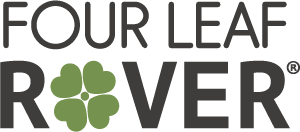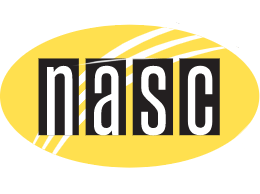What Are The Best Veggies For Dogs?

Even if your dog eats a raw prey model diet that's mostly meat, he can still benefit from vegetables to provide extra nutrients. Extra vitamins, minerals and fiber will support his ongoing good health. So let’s look at the best vegetables you can add to your dog’s diet.
There are many more than 10 best vegetables for dogs so this list has a look at many more.
RELATED: Top benefits of vegetables for dogs …
Best Veggies For Dogs
Vegetables (and fruit) can and should make up about 10% of your dog’s diet. You want to feed your dog a rainbow of colors as each color has unique nutrients and benefits.
Dogs get dietary fiber from vegetables. They need fiber because it breaks down into short-chain fatty acids that provide vital functions related to health. SCFAs are a source of energy, protect the gut lining and support the immune system. And fiber is also a prebiotic that feeds beneficial bacteria in your dog’s gut.
Here are our top vegetables for dogs …
- Broccoli: It's high in fiber, vitamin C, and potassium and is also a good source of antioxidants … and sulforaphane. Sulforaphane is an indirect antioxidant that supports a properly functioning immune system.
- Spinach: It’s high in fiber, vitamins A, C, and K, iron, and calcium.
- Asparagus: It’s rich in vitamins, minerals and antioxidants and is high in fiber. Feed it in small amounts to avoid digestive upset, and blend or steam the vegetable before feeding.
- Brussels sprouts: They are high in fiber, vitamins A and C, and folate.
- Carrots: They are high in fiber, vitamin A, and beta-carotene, and are good for chewing for your dog.
- Cabbage: It is high in fiber, vitamins C and K, and antioxidants. Cabbage can make your dog gassy if he eats it too often.
- Cauliflower: It’s high in fiber, vitamins C and K, and folate to support proper function of your dog’s eye health, liver and muscles. It also contains sulforaphane to support proper immune function.
- Green beans: They are a good source of fiber, vitamins K and C, folate and manganese.
- Kale: It’s high in fiber, vitamins A, C, and K, and antioxidants.
- Bell peppers: Red peppers are especially nutritious and are high in fiber, vitamins, and contain antioxidants like lutein and quercetin, with 4 times more vitamin C than an orange. Peppers also have solanine, which can be toxic to dogs. If your dog has an inflammatory disease like arthritis, then it’s best to avoid peppers.
- Cucumber: It’s low in calories and high in water content, which can help keep your dog hydrated.
- Zucchini: It’s a tasty vegetable that’s full of antioxidants, vitamins and minerals. This makes them a great choice for dogs. They can be especially effective for dogs with weight or digestive problems.
- Lettuce And Leafy Greens: Leafy vegetables like spinach, romaine lettuce, kale and collard greens are rich in chlorophyll which can support proper immune function and good digestive health.
- Mushrooms: There are mushrooms that are safe for dogs that are rich in antioxidants, as well as prebiotics to help support your dog’s digestive health and a proper functioning immune system. Mushrooms like shiitake should be cooked and added to your dog’s meals.
- Pumpkin: This is an excellent source of nutrients and fiber and can also bulk up stool in cases of diarrhea. Be sure to use plain pumpkin and not pumpkin pie filling. Start with a teaspoon or less and monitor the results.
Vegetable Microgreens And Sprouts
You can also feed your dog vegetable microgreens and sprouts. Microgreens have 40 to 400 times more nutrients than mature vegetables, and they’re easy to feed to your dog by sprinkling on his food.
RELATED: Healthiest microgreens for dogs …
What Vegetables Are Bad For Dogs?
- Starchy vegetables are high in carbohydrates, which break down into sugar and can spike blood sugar levels.And dogs don’t need carbohydrates. They can get all the energy and nutrients they need from protein and fat, fruits and vegetables … without starchy carbohydrates. Starchy vegetables like potatoes, corn, and peas can lead to weight gain and digestive problems and should be avoided.
- Onions contain compounds that can damage a dog's red blood cells, leading to anemia.
- Avocado skin and pits contain persin that’s a natural fungicide that can be harmful to dogs if they get into the compost bin. Persin can cause vomiting, diarrhea, and other digestive problems. Avocado flesh is fine to feed most dogs, however.
- Legumes like lentils and chickpeas are high in protein (and starch) and are often found in processed kibble. But they’re high in phytic acid and lectins which can stop your dog from absorbing important nutrients. They’re also often high in pesticide or herbicide residues, unless they’re organic.
Best Vegetables For Dogs With Allergies
Dogs with allergies tolerate some vegetables are better than others. And many are vegetables that we listed earlier as good for dogs. They include green beans, carrots, zucchini, broccoli, spinach and cucumber, which are low in allergens and high in fiber, vitamins, and minerals.
Sweet potatoes and squash are starchier vegetables but are also low in allergens as well as being good sources of fiber, vitamins and minerals.
How To Prepare Vegetables For Dogs
First, buy organic vegetables whenever you can. This will help you avoid vegetables known for high pesticide or herbicide residues, like kale or spinach, as well as veggies that are often genetically modified, like corn or squash.
Next, most veggies for dogs need to be cooked for digestibility.
Cooking Vegetables For Dogs
Cooking vegetables is important for dogs. Dogs have a shorter digestive tract than humans, and they lack some of the digestive enzymes that are necessary to break down certain compounds found in vegetables. Cooking vegetables for dogs can make them easier to digest and can also help to break down the cell walls of certain vegetables, which can increase the bioavailability of nutrients.
Additionally, some vegetables contain compounds that can be harmful to dogs when they’re eaten raw or in large quantities. Cooking can help to break down these compounds and make them safe for your dog to eat.
Some examples of compounds that dogs may have difficulty digesting include:
- Cellulose: This makes up the cell walls of plants. Dogs don’t produce the enzyme cellulase, needed to break down cellulose, so they may have difficulty digesting vegetables.
- Lectins: These are proteins that are found in many types of plants, especially legumes. Some lectins can be harmful to dogs and can cause digestive upset or other health problems.
- Oxalates: These are compounds found in spinach and beet greens, that can form crystals in the urinary tract and cause kidney problems in dogs.
- Solanine: This is a toxic compound found in nightshades like tomatoes, potatoes, peppers and eggplant, that can be harmful to dogs in large quantities.
Cooking vegetables can help to break down some of these compounds, making them easier for dogs to digest and reducing the risk of potential health problems.
- You can cook vegetables by steaming, boiling or roasting them. Avoid using oils, seasonings or other ingredients that may be harmful to dogs.
- Cut, grate or chop vegetables into small pieces to prevent choking and make it easier for your dog to digest.
- Freeze vegetables like carrots, beans or berries as treats. Freezing changes the structure and makes them digestible so you can thaw and add them to your dog’s food.
Another alternative is to mulch or purée veggies instead of cooking, and stir into your dog’s meal. This also breaks down the fiber and cellulose for better digestion.
So you see, with a few exceptions, most vegetables are healthy and nutritious for your dog and have many benefits. Remember to introduce new vegetables to your dog's diet gradually, as sudden changes can cause digestive upset or diarrhea.




